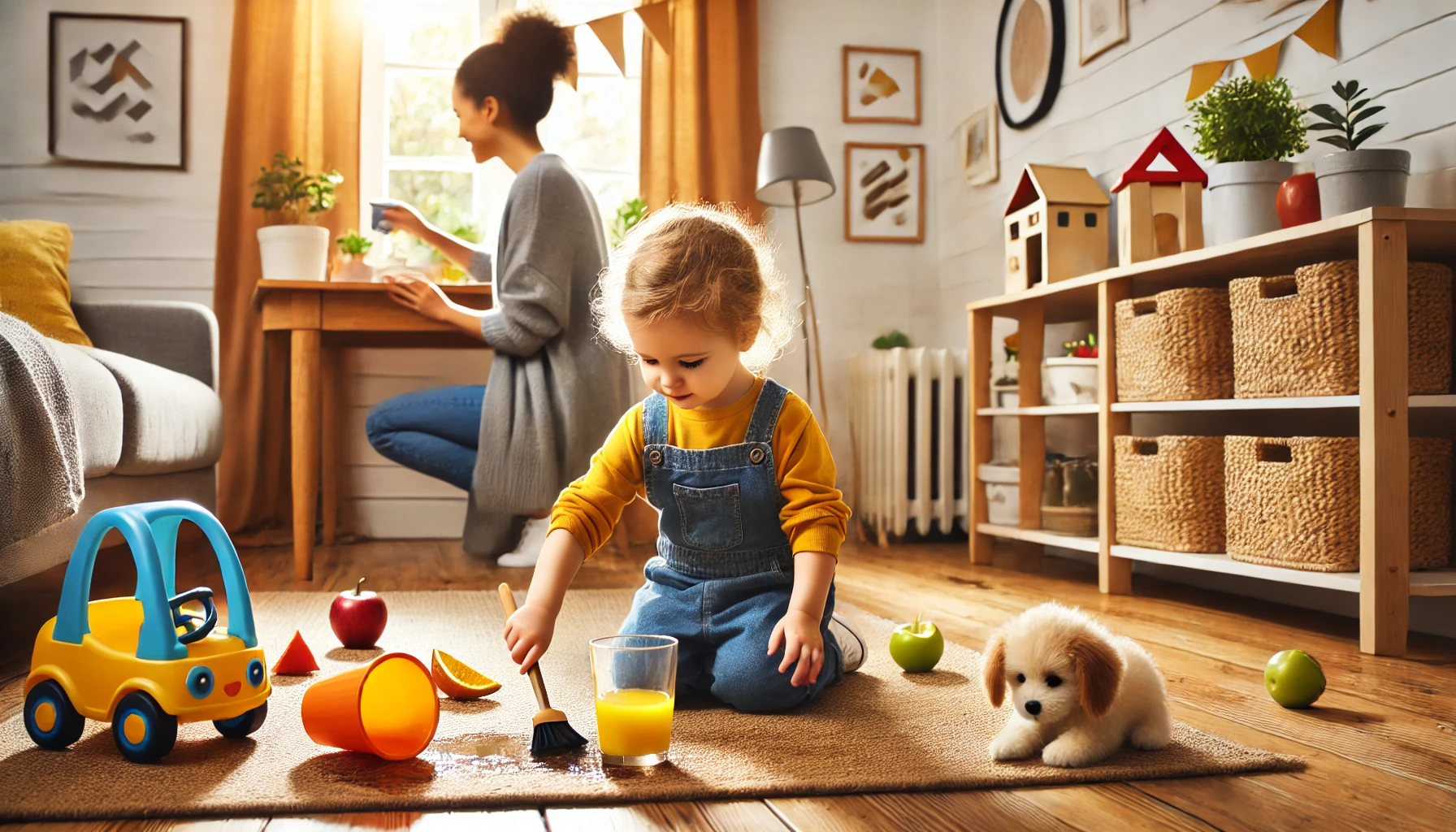How to Teach Young Children About Being Responsible for Their Actions
Teaching young children to take responsibility for their actions helps them develop accountability, self-discipline, and problem-solving skills. When kids understand that their choices have consequences, they learn to make better decisions and treat others with respect. Parents can encourage responsibility through daily routines, role-modeling, and positive reinforcement. In this article, we’ll explore practical ways to help children understand and practice responsibility.
Why Teaching Responsibility is Important
- Encourages accountability – Helps children understand the impact of their actions.
- Builds self-discipline – Teaches kids to think before acting.
- Develops problem-solving skills – Encourages children to find ways to fix mistakes.
- Strengthens relationships – Promotes trust and respect in social interactions.
- Prepares for lifelong independence – Helps kids develop habits of responsibility.
1. Model Responsibility in Daily Life
Children learn best by watching how adults take responsibility for their own actions.
Activity Idea:
- If you make a mistake, say, “I forgot to buy milk today. I’ll write it on the list so I remember next time.”
- Show responsibility for commitments: “I promised to read with you, so let’s do it now.”
- Apologize when necessary: “I was wrong about that. I’m sorry.”
What Kids Learn:
- That everyone, including adults, takes responsibility for their actions
- How to acknowledge mistakes and make things right
- The importance of keeping promises and commitments
2. Teach Kids That Actions Have Consequences
Helping children understand that choices lead to results builds awareness and accountability.
Activity Idea:
- If a child forgets their toy outside and it gets wet, discuss why taking care of belongings is important.
- Use natural consequences: “If you don’t put your shoes away, you might not find them when you need them.”
- Avoid rescuing kids from every mistake—let them experience small failures safely.
What Kids Learn:
- That their actions have real consequences
- The importance of thinking before acting
- How responsibility helps prevent problems
3. Encourage Kids to Fix Their Mistakes
Helping children take ownership of mistakes teaches problem-solving and accountability.
Activity Idea:
- If a child spills something, guide them to clean it up: “Accidents happen! Let’s clean it together.”
- If they hurt someone’s feelings, encourage a sincere apology: “What can you do to make it better?”
- Praise efforts to fix mistakes: “I love how you took responsibility for that!”
What Kids Learn:
- That mistakes are opportunities to learn and grow
- How to take action instead of making excuses
- The value of making amends and solving problems
4. Give Children Small Responsibilities
Letting kids handle age-appropriate tasks builds confidence and responsibility.
Activity Idea:
- Assign simple daily chores, like setting the table or feeding a pet.
- Create a Responsibility Chart where kids track completed tasks.
- Let kids make small decisions, like choosing their own clothes, to practice responsibility.
What Kids Learn:
- That being responsible means helping out and contributing
- How completing tasks independently builds confidence
- The importance of reliability and following through
5. Encourage Decision-Making and Accountability
Allowing children to make choices teaches them to own their decisions.
Activity Idea:
- Give two options: “Would you like to do your homework before or after snack?”
- Let kids experience the results of their choices: “If you don’t wear a jacket, you might feel cold outside.”
- Praise thoughtful decision-making: “That was a great choice! You planned ahead.”
What Kids Learn:
- That making good choices leads to positive outcomes
- How to think ahead before making decisions
- The importance of personal responsibility in daily life
6. Read Books About Responsibility
Stories help children understand responsibility in a relatable way.
Activity Idea:
- Read The Berenstain Bears and the Trouble with Chores or What If Everybody Did That?
- Discuss the story: “What happened when the character took responsibility?”
- Encourage kids to share times when they were responsible.
What Kids Learn:
- How responsibility affects themselves and others
- The importance of completing tasks and fixing mistakes
- That responsibility is a sign of maturity
7. Praise and Reinforce Responsible Behavior
Recognizing when children take responsibility encourages them to keep practicing it.
Activity Idea:
- Say, “I love how you put your toys away without being asked!”
- Use a “Responsibility Jar”, where kids earn tokens for responsible actions.
- Ask, “How did it feel to be responsible today?” to encourage reflection.
What Kids Learn:
- That responsibility is valued and appreciated
- How taking responsibility makes life easier and more organized
- The motivation to keep practicing responsible habits
8. Be Patient and Supportive as They Learn
Responsibility takes time to develop, so gentle guidance and encouragement are key.
Activity Idea:
- If a child struggles with responsibility, guide them: “Let’s figure out a way to remember your homework.”
- Offer support instead of punishment when mistakes happen.
- Reinforce the idea that responsibility is a lifelong skill.
What Kids Learn:
- That learning responsibility is a process
- How to handle mistakes with a problem-solving mindset
- The importance of continuous improvement
Final Thoughts
Teaching young children about being responsible for their actions helps them develop accountability, independence, and problem-solving skills. By modeling responsibility, allowing natural consequences, and praising responsible behavior, parents can guide children toward making thoughtful choices and taking ownership of their actions.
